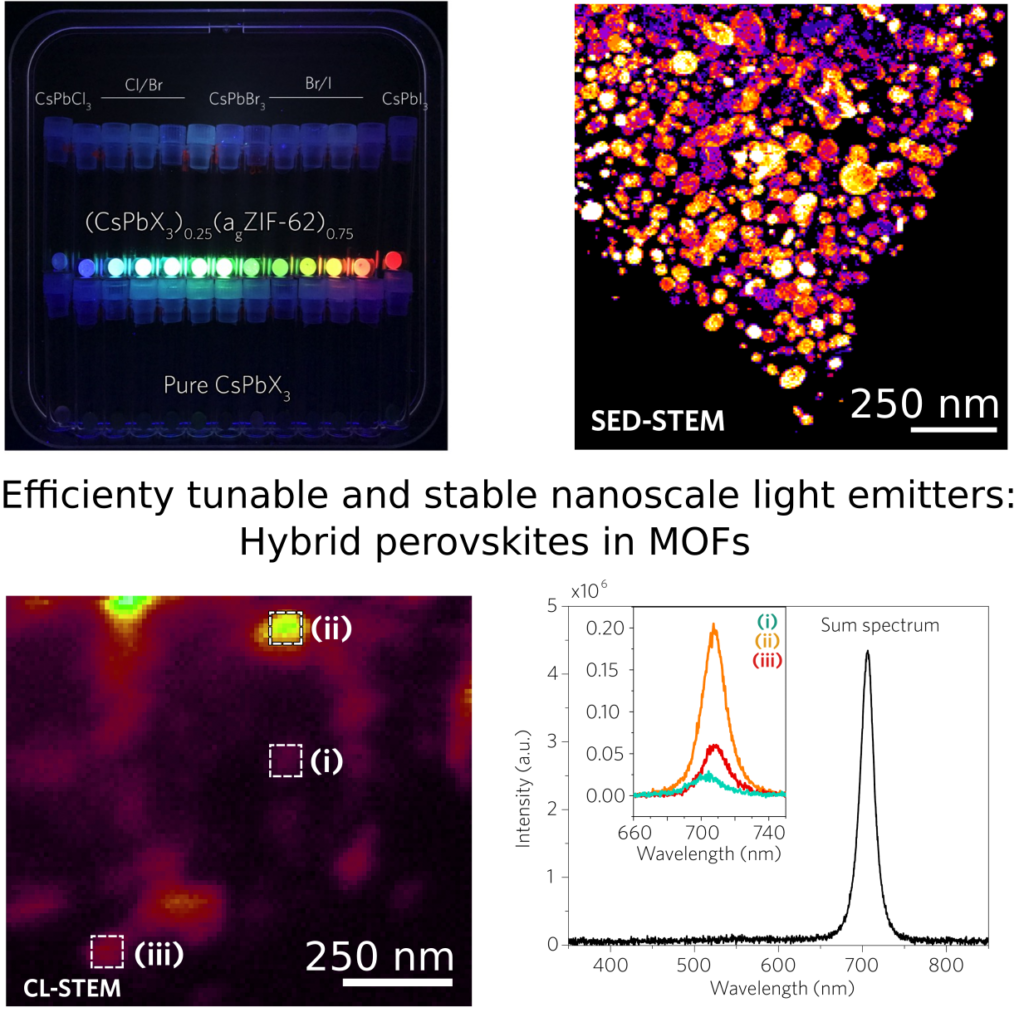Lead halide perovskite (LHP) semiconductors show exceptional optoelectronic properties. Barriers for their applications, however, lie in their polymorphism, instability to polar solvents, phase segregation, and susceptibility to the leaching of lead ions. We report a family of scalable composites fabricated through liquid-phase sintering of LHPs and metal-organic framework glasses. The glass acts as a matrix for LHPs, effectively stabilizing nonequilibrium perovskite phases through interfacial interactions. These interactions also passivate LHP surface defects and impart bright, narrow-band photoluminescence with a wide gamut for creating white light-emitting diodes (LEDs). The processable composites show high stability against immersion in water and organic solvents as well as exposure to heat, light, air, and ambient humidity. These properties, together with their lead self-sequestration capability, can enable breakthrough applications for
LHPs.

